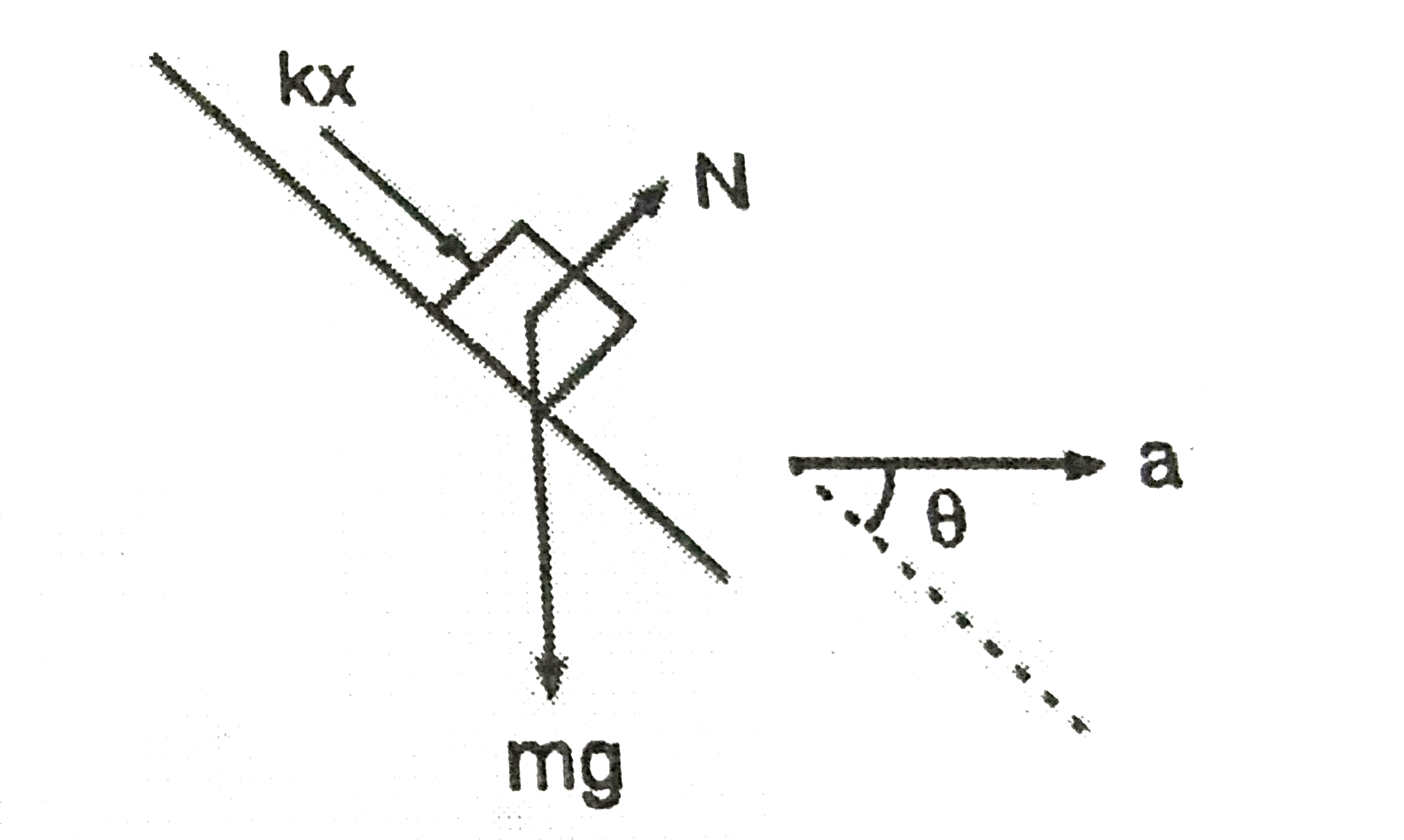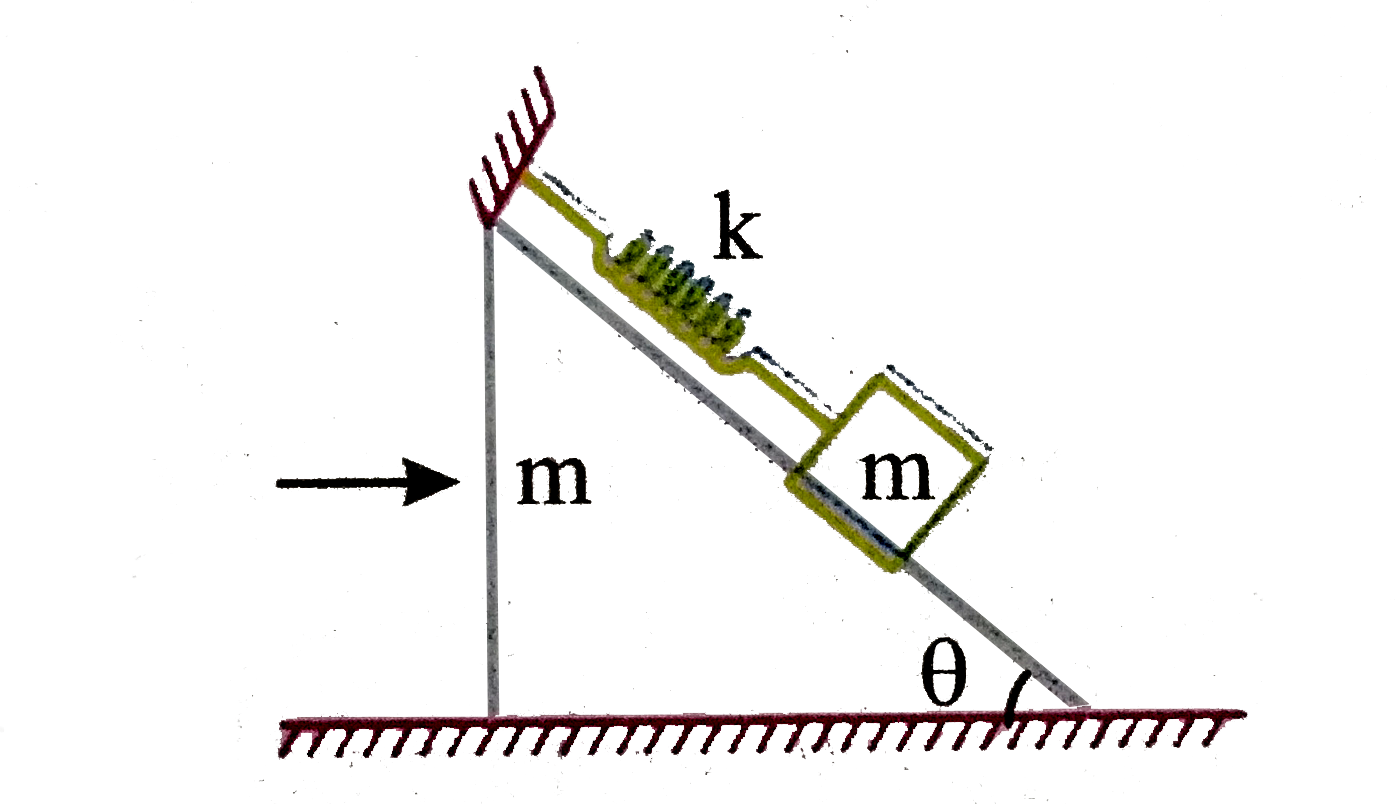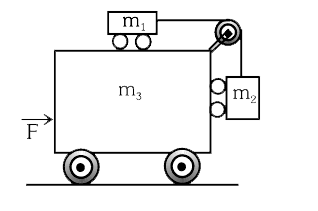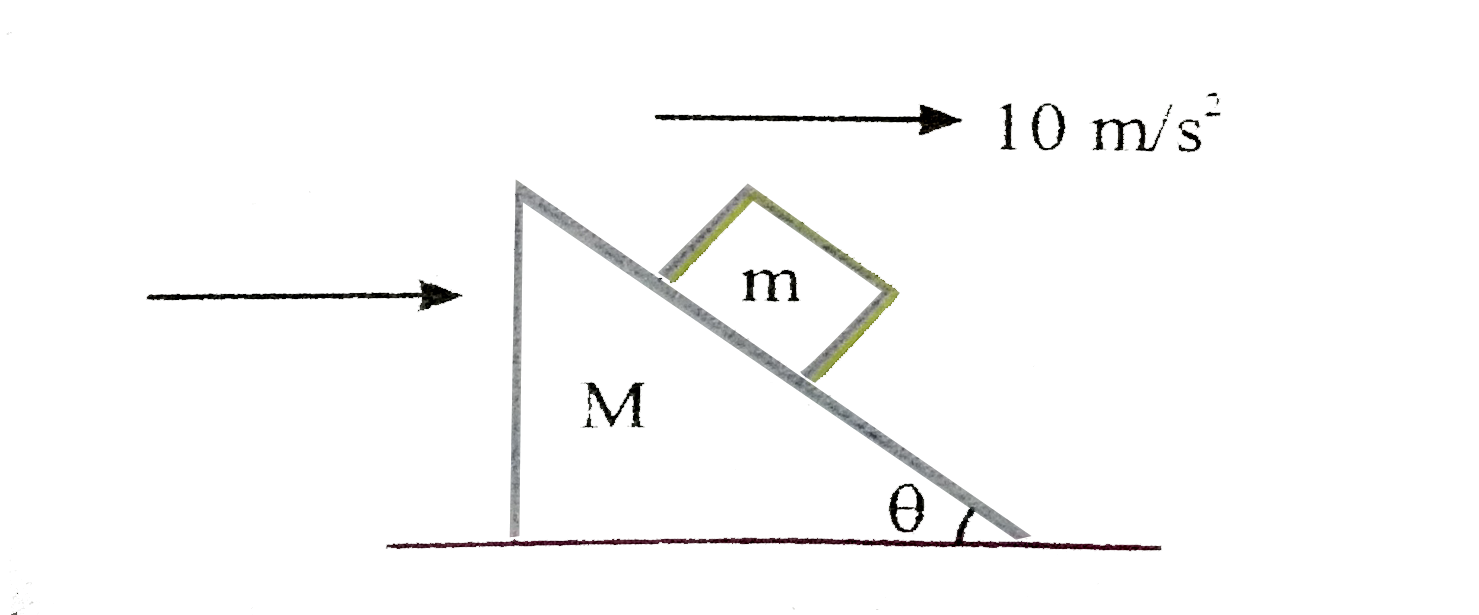In the diagram given below all surfaces are frictionless. What horizontal force has to be applied on wedge such that in equilibium steady state spring is compressed by
mgsinθk?

2mgtanθ
2mgsinθ
4mgtanθ
2mgtanθ
The correct Answer is:C
Applying Newton's law among incline

kx+mgsinθ=macosθ
2mgsinθ=F2cosθ,4mgtanθ=F
Topper's Solved these Questions
- FORCE AND NEWTONS LAWS OF MOTIONBook:GRB PUBLICATIONChapter:FORCE AND NEWTONS LAWS OF MOTIONExercise:More than one choice is correct
Explore 15 Videos
- FORCE AND NEWTONS LAWS OF MOTIONBook:GRB PUBLICATIONChapter:FORCE AND NEWTONS LAWS OF MOTIONExercise:Assertion- Reason
Explore 4 Videos
- FORCE AND NEWTONS LAWS OF MOTIONBook:GRB PUBLICATIONChapter:FORCE AND NEWTONS LAWS OF MOTIONExercise:Problem for practice
Explore 30 Videos
- BASIC MATHEMATICSBook:GRB PUBLICATIONChapter:BASIC MATHEMATICSExercise:Problems For Practice
Explore 35 Videos
- FRICTION AND CIRCULAR MOTION Book:GRB PUBLICATIONChapter:FRICTION AND CIRCULAR MOTION Exercise:Comprehension type
Explore 11 Videos
Similar Questions
In the figure2.217 all the surfaces are frictionless. What force F is required to be applied on the bigger block so that m2 and m3 will remain at rest on it.

View SolutionIn the adjoining figure all surface are frictionless . What force F must by applied to M1 to keep M3 free from rising or falling?

View Solution
Knowledge Check
In the above diagram all surface friction less what horizontal force has to be applied on wedge such in equilibrium steady state sping is compressed by mgsinθK
 .A2mgtanθB2mgsinθC4mgtanθD2mgtanθ
.A2mgtanθB2mgsinθC4mgtanθD2mgtanθAll surfaces assumed to be frictionless calculate the horizontal force F that must be applied so that m1 and m2 do not move relative to m3 is :–
 A(m1+m2+m3)m2gm1B(m1+m2)m2gm1C(m2+m3)m1gm2D(m1+m3)m1gm2
A(m1+m2+m3)m2gm1B(m1+m2)m2gm1C(m2+m3)m1gm2D(m1+m3)m1gm2All the surfaces are frictionless and system is released from test when ideal spring of stiffness k is in its relaxed state. Choose the correct statement.
 AThe magnitude of maximum acceleration of particle B is g3BThe magnitude of maximum acceleration of particle B is 2g3CThe maximum speed of particle A is 2g√m3kDThe maximum speed of particle A is g√m3k
AThe magnitude of maximum acceleration of particle B is g3BThe magnitude of maximum acceleration of particle B is 2g3CThe maximum speed of particle A is 2g√m3kDThe maximum speed of particle A is g√m3k
What force should be applied on the wedge so that block over it does not move? (All surfaces are smooth)

View SolutionA wedge of mass M makes an angle θ with the horizontal. The wedge is placed on horizontal frictionless surface. A small block of mass m is placed on the inclined surface of wedge. What horizontal force F must be applied to the wedge so that the force of friction between the block and wedge is zero ?
View SolutionA spring of force constant 24N/m is resting on a frictionless horizontal surface. A force of 10N is applied on the block of mss 4kg at one end of the spring. What is the speed of the block when it has been moved through a distance of 0.5 m ?
View SolutionTwo blocks of masses 2 kg and 4 kg are in close contact on a frictionless horizontal table. A horizontal force of 18 N is applied to the larger mass. What is the force at the surface of contact between the blocks?
View SolutionIn the figure shown all the surfaces are frictionless and mass of block m=1kg, block and wedge are held initially at rest, now wedge is given a horizontal acceleration of 10m/s2 by applying a force on the wedge so that the block does not slip on the wedge, the work done by normal force in ground frame on the block in √3sec is
 .
.
View Solution